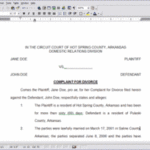Plaintiff, Ashley Pelman, a minor, is suing McDonald’s Corp. after purchasing and consuming food and drink products sold by Defendant-McDonald’s and suffering physical ailments as an alleged side-effect of same. The plaintiff alleges that because of the high caloric, fat, and salt content in McDonald’s food, plaintiff suffered from health issues ranging from obesity, diabetes, and other adverse health effects. Plaintiff also alleges that McDonald’s negligently and intentionally caused consumers harm by selling an inherently dangerous product and failing to warn consumers of the health effects of consuming their product. The last claim is that defendant purposely defrauded consumers in its deceptive advertising making McDonald’s appear to serve healthy products appropriate for a child to consume.
There are two aspects of this lawsuit, one being a statutory claim that McDonald’s committed engaged in deceptive advertising, in violation of the New York State Consumer fraud provisions (NY CLS Gen Bus § 349). These allegations relate to the advertising and promotions McDonald’s ran which depicted that their food was healthy if consumed daily. The second portion of this lawsuit is product liability tort based claims that McDonald’s negligently and intentionally sold an inherently dangerous product. The claim is that their products are dangerous because of high levels of cholesterol, fat, salt and sugar in their food, which they failed to warn consumers of the dangers of and their failure to provide the nutritional content of their products. Plaintiff alleges that her damages were a direct cause of consuming McDonald’s food. Last, the plaintiff claims that McDonald’s committed a product liability tort by knowingly selling food products which are physically or psychologically addictive.
In order to successfully prove that a company or person has committed a tort there are four elements that must be proven. The first is that McDonald’s, or defendant, has a duty toward the plaintiff. Next, the plaintiff must demonstrate that this duty was breached and as a direct result of that breach the plaintiff sustained injuries. In this case Plaintiff, Pelman, must prove that McDonald’s had a duty toward her, and that by both serving their products and failing to provide factual data on their products contents and adverse health effects which may result from their products, they breached this duty. Once this is established, Plaintiff must show that her injuries were caused by consuming McDonald’s products.
McDonald’s first position in this case would be to prove that McDonald’s did not owe a duty to the consumer-plaintiff because the adverse health effects of frequently consuming fast food is already common knowledge widely known by the public and thus there is an assumption of risk. As in the case Olliver v. Heavenly Bagels, Inc., “When a product by its very nature had a dangerous attribute, liability was imposed only when the product had an attribute not reasonably contemplated by the purchaser or was unreasonably dangerous for its intended use.” In addition to this, McDonald’s should state, in the event a duty of care is proven, that the injuries sustained by the plaintiff can not be proven to have a proximate casual link to consumption of fast food under Restatement (Second) Torts, §402A, cmt. i. which states:
“Many products cannot possibly be made entirely safe for all consumption, and any food or drug necessarily involves some risk of harm, if only from over-consumption. Ordinary sugar is a deadly poison to some diabetics, and castor oil found use under Mussolini as an instrument of torture. That is not what is meant by “unreasonably dangerous” …. The article sold must be dangerous to an extent beyond that which would be contemplated by the ordinary consumer who purchases it, with the ordinary knowledge common to the community as to its characteristics. Good whiskey is not unreasonably dangerous merely because it will make some people drunk, and is especially dangerous to alcoholics; but bad whiskey, containing a dangerous amount of fuel oil, is unreasonably dangerous. Good tobacco is not unreasonably dangerous merely because the effects of smoking may be harmful; but tobacco containing something like marijuana may be unreasonably dangerous. Good butter is not unreasonably dangerous merely because, if such be the case, it deposits cholesterol in the arteries and leads to heart attacks; but bad butter, contaminated with poisonous fish oil, is unreasonably dangerous.
McDonald’s key argument would be that the plaintiff over consumed a product widely known to have adverse health effects in large quantities, on her own free will. Since illness and disease occurs from many factors including a family history of illness, stress, pollution, and lack of exercise, proving that consuming fast food was a definitive cause of the plaintiff’s injuries is difficult. In fact, McDonalds could even claim that there has been evidence that there has been at least one well publicized individual who did consume McDonalds on a daily basis and despite this was a healthy weight and suffered no adverse health effects to support this claim (“Man Gets Big” 2008).
Plaintiff’s primary rebuttal to the claim that frequent consumption of fast foods is commonly known to be unhealthy can be refuted in two ways. The first argument is that McDonald’s products are more unhealthy or dangerous, than the ordinary food products they sell, and that these products are “altered” in way through the use of additives and preservatives so that their nutritional value can not be estimated correctly by the average person. In order to move forward with the tort portion of the suit, plaintiff must prove that McDonald’s owed them a duty of care. Taking into consideration the factors that McDonald’s advertised their products as healthy for everyday consumption and that nutritional data was not supplied, even upon request, the plaintiff has a better ability to establish a duty of care as this supports the fact that consumers were not aware of, and had to way to obtain knowledge of the nutritional content of their products to assess if they were healthy. Also, in order to prove that McDonald’s food is an inherently dangerous product, plaintiff must prove under the inherently dangerous product doctrine, that a product is dangerous to an extent not contemplated by a purchaser or if it’s unreasonably dangerous for its intended use, regardless of the plaintiff’s knowledge. Plaintiff could argue that the consumer could not have contemplated the addictive qualities of fast food that McDonald’s had knowledge of through its internal study. McDonald’s would not be able to claim that daily consumption of fast food was over categorized as over-consumption in light of their advertising and marketing promotions stating that daily consumption was healthy.
In regards to the false and deceptive advertisement claims, similar to the negligence claims the plaintiff must not only provide the advertisements in question and show how they were deceptive, but they must prove that their injuries were a result of the, “deceptive practice, act or advertisement,” (NY CLS Gen Bus § 349). Given the ad that plaintiff Pelman is in possession of, stating that “McDonald’s Everyday-The Start to a Healthier Happier You,” the two items that plaintiff must present to the court are that the ad was intended for the consumer and was, “misleading in a material respect,” (NY CLS Gen Bus § 349). Under New York’s consumer fraud provisions, an ad is considered deceptive when plaintiff can show that the business alone possesses information or that a consumer could not reasonably obtain it (Harvard, 2006). Under this law the plaintiff must prove that. “…a reasonable consumer would have been misled by the defendant’s conduct” (Marcus v. AT&T;). Given the fact that McDonald’s did not provide nutrition information to its customers, even upon request, plaintiff could easily provide evidence to successfully make a claim under this law. Additionally, plaintiff claims that McDonald’s harmed consumers by enticing them to buy “value meals” without disclosing the detrimental health effects, and that plaintiff routinely purchased value meals because of this marketing promotion, could provide an additional measure of how advertising hurt the plaintiff. In spite of the increased ability to prove McDonald’s issued false and deceptive advertisements, plaintiff’s more difficult job would be showing a definitive link between consumption of McDonald’s and adverse health effects. It is during satisfying this requirement that most of McDonald’s arguments could be made as health is a combination of various environmental and personal factors.
I agree that in light of the additional “hypothetical facts” provided, the argument that McDonald’s owed a duty to plaintiff and that their advertising was deceptive would be easier to rule in favor of the plaintiff. Even in the case of the product liability tort claims the fact that McDonald’s knew of the harm their products could cause and withheld this information from consumers, may allow the plaintiff to show that McDonald’s owed a duty of care and breached this duty. But the most difficult aspect of this case for the plaintiff would be proving that a diet high in McDonald’s fast food was the proximate cause of any illness, disease, or adverse health, even in light of the strengthened evidence and hypothetical facts. If this were to have reached this stage McDonald’s would point out various other contributing negligent factors committed by the consumer, which may have caused these adverse health effects, including consumption of other fast food or unhealthy food products, lack of exercise, a family history of obesity or disease, and environmental factors plaintiff withstood. In terms of interpreting the law, I believe with the additional information provided in this case study I would have to agree that McDonald’s owed the plaintiff a duty, however, I see the social repercussions that could exist if the court were to rule in favor of the plaintiff, thus allowing the Court to set precedent. This would have a severe economic impact on the overall fast food industry and possibly remove the element of personal responsibility consumers should have for their own diet and health.
References
AP. (2008, September 10). Disorder drives man to eat 23,000 Big Macs – Health – Mental health – msnbc.com. MSNBC. Retrieved July 26, 2010, from http://www.msnbc.msn.com/id/26623057.
Benloulou, J. (2005, April 1). Harvard Law School. Pelman v. McDonald’s: An In-depth Case Study of a Fast Food – Obesity Lawsuit. Retrieved July 5, 2010, from leda.law.harvard.edu/leda/data/693/Benloulou05.pdf.
Institute, A. L. (1979). Restatement of the Law Second Torts 2d Student Edition (1, 2, 3 & 4). Philadelphia: American Law Institute.
Marcus v. AT&T;, 138 F.3d 46, 64 (2d Cir. 1998)
NY CLS Gen Bus § 349, (2010).
NY CLS Gen Bus § 350 (2010)
Olliver v. Heavenly Bagels, Inc., 729 N.Y.S.2d 611, (N.Y., 2001)
Pelman v. McDonald’s Corp., 237 F. Supp. 2d 512, 516 (S.D.N.Y. 2003).



